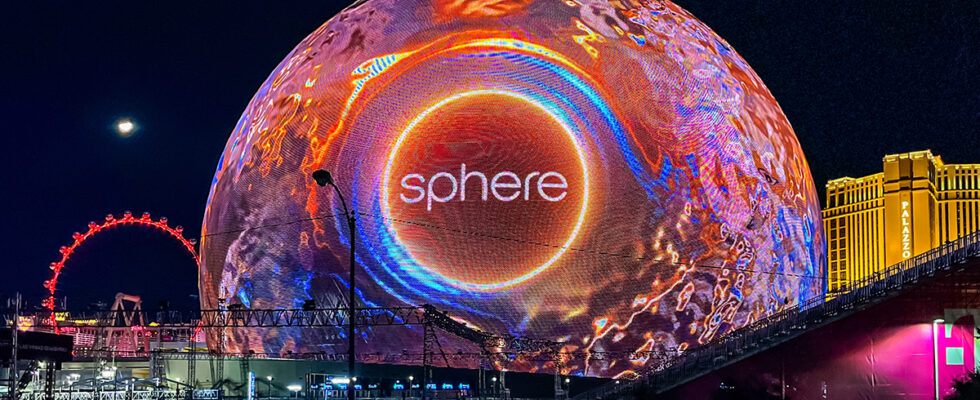The screen technologies used by the giant sphere of Las Vegas are extraordinary. This is also the case in terms of storage space and throughput, where the performance hall impresses.

No need to go there, you must have already heard of Las Vegas. Built in the Mojave Desert in Nevada in the United States, the city is famous for being home to many casinos open 24 hours a day and replicas of famous monuments: the Grand Canal of Venicethere Eiffel Tower or a pyramid, actually a hotel. It is also in Las Vegas that the Consumer Electronics Show (CES), a show during which innovations such as a transparent and wireless OLED TV are unveiled.
Speaking of screens, it’s hard to miss those of the Sphere at The Venetian Resort inaugurated in September 2023. As its name suggests, it is a gigantic ball 112 meters high and 157 meters wide to the maximum. Its entire external surface is made up of screens on which animations or advertisements are broadcast. The building is in fact a concert and performance hall whose interior is equipped with16K screens. Suffice it to say that the storage space and its throughput must be ensured behind the scenes.
The storage capacity of the Las Vegas sphere is extraordinary, as is its throughput
In order to enable the broadcast of images of such high quality and over such a large surface area, the sphere is based on a system developed by Hitachi Ventara. He is composed of 27 nodes representative 4 PB of storageOr 4000 TB. It sends content in real time to dedicated servers, each broadcasting 4K videos at 60 frames per second. On this scale, the Las Vegas sphere is the only one that can do that.
Also read – Samsung makes Las Vegas even more LED with giant screens in the shape of the F1 logo
The flow rate is definitely there. For Darren Aronofsky’s immersive film, Postcard from Earththis unique SSD in the world manages more than 400 GB/s throughput with a latency less than 5 milliseconds and one 12-bit color display with a 4.4.4 subsampling, or the full color range. For comparison, the global standard for television is 4.2.2.
Source: TechRadar
